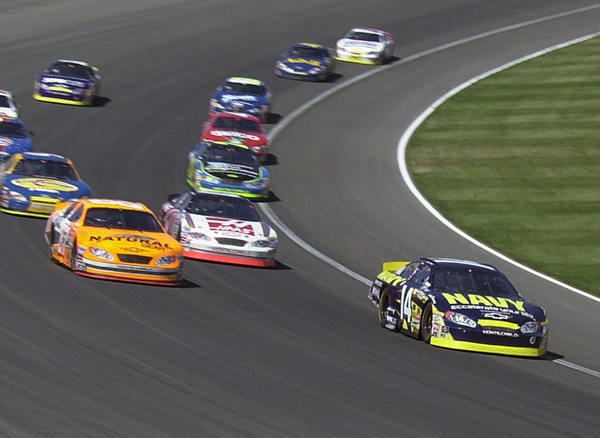Open wheel racing is like the wild west of motorsport, where the cars look like they’ve been stripped down to their bare essentials, leaving nothing but raw speed and adrenaline. Imagine a vehicle that’s all engine, wheels, and a driver with nerves of steel. That’s open wheel racing for you. It’s a sport where the cars have their wheels outside the main body, unlike your typical road car where the wheels are tucked neatly under fenders. This design isn’t just for show; it’s a crucial part of what makes these racing vehicles so fast and agile.
The Thrill of Open Wheel Racing
Open wheel racing is a high-octane sport that attracts thrill-seekers and speedsters from around the globe. The open wheel design allows for advanced aerodynamics, which means these cars can reach top speeds that would make a cheetah blush. The combination of powerful engines and lightweight bodywork ensures that these vehicles can curve around tracks with incredible precision and control.
The sport is not just about speed; it’s about the art of racing. Drivers must master the delicate balance of grip and handling, making split-second decisions as they navigate tight corners and long straights. It’s a dance of danger and skill, where one wrong move can send a car spinning off the track. The thrill of open wheel racing lies in this constant push to the edge, where drivers and teams strive to outpace their competitors.
Different Series of Open Wheel Racing
Open wheel racing isn’t a one-size-fits-all affair. There are several series, each with its own flavor and set of rules. Formula 1 is perhaps the most famous, known for its glamorous races and cutting-edge technology. It’s the pinnacle of open wheel racing, where teams spend millions to shave off fractions of a second from their lap times.
IndyCar, on the other hand, offers a distinctly American twist on the concept. With a mix of road courses and oval tracks, IndyCar races are a test of versatility and endurance. Then there’s Formula E, the electric sibling of Formula 1, which focuses on sustainability and innovation. Each series presents unique challenges, but all share the core elements of speed, strategy, and skill.
The Anatomy of an Open Wheel Car
Open wheel cars are marvels of engineering, designed to slice through the air with minimal resistance. The exposed wheels are just the tip of the iceberg. These cars feature advanced aerodynamics, with wings and bodywork that generate downforce to keep them glued to the track. The engines are powerful beasts, capable of propelling the cars to mind-boggling speeds.
The driver’s seat is a snug fit, designed to keep the driver secure as they experience high G-forces during races. Safety is paramount, with features like the halo device to protect drivers in case of a crash. The combination of cutting-edge technology and meticulous design makes open wheel cars some of the most sophisticated racing machines on the planet.
Technology in Open Wheel Racing
Technology is the beating heart of open wheel racing. From the engines to the tires, every component is optimized for performance. Teams use advanced telemetry systems to monitor the car’s performance in real-time, making adjustments on the fly to gain a competitive edge. Aerodynamics play a crucial role, with engineers constantly tweaking the car’s design to improve airflow and reduce drag.
The tires are another critical element, providing the grip needed to navigate corners at high speeds. Different compounds are used depending on the track conditions, with teams strategizing on when to switch tires during a race. The combination of technology and strategy is what makes open wheel racing a fascinating sport to watch and a challenging one to compete in.
The Drivers
Open wheel racing drivers are a breed apart. They possess a unique combination of skill, bravery, and determination. These athletes must have lightning-fast reflexes and the ability to remain calm under pressure. The physical demands of driving an open wheel car are immense, with drivers enduring high G-forces and extreme temperatures during races.
But it’s not just about physical prowess. Drivers must also be strategic thinkers, working closely with their teams to develop race strategies and make split-second decisions on the track. The best drivers are those who can seamlessly blend speed with strategy, pushing their cars to the limit while keeping a cool head.
The Tracks
Open wheel races take place on a variety of tracks, each offering its own set of challenges. From the tight corners of Monaco to the high-speed straights of Monza, each circuit tests the drivers’ skills in different ways. Road courses are a staple of open wheel racing, with their combination of sharp turns and long straights providing a thrilling spectacle for fans.
Oval tracks, common in IndyCar racing, present a different challenge, with drivers reaching incredible speeds as they navigate the banked curves. Street circuits, like those used in Formula E, add an extra layer of complexity, with narrow roads and unforgiving barriers. Each track is a unique battleground, where drivers and teams must adapt their strategies to come out on top.
The Strategy
While speed is a crucial element of open wheel racing, strategy plays an equally important role. Teams must carefully plan their pit stops, tire changes, and fuel management to gain an advantage over their rivals. The timing of a pit stop can make or break a race, with teams working tirelessly to execute flawless stops in a matter of seconds.
Race strategy also involves managing the car’s performance throughout the race. Drivers must balance the need for speed with the preservation of their tires and fuel. It’s a delicate dance, where one wrong move can lead to disaster. The best teams are those that can seamlessly integrate speed and strategy, using both to outmaneuver their competitors.
The Future of Open Wheel Racing
The future of open wheel racing is as exciting as its present. With advancements in technology and a growing focus on sustainability, the sport is evolving to meet the challenges of the modern world. Formula E is leading the charge, showcasing the potential of electric vehicles in motorsport. As battery technology improves, we can expect to see even more thrilling races from this series.
Meanwhile, traditional series like Formula 1 and IndyCar are also embracing change, with new regulations aimed at reducing emissions and improving safety. The future of open wheel racing promises to be a thrilling ride, with new technologies and innovations pushing the boundaries of what’s possible on the track.
Open Wheel Racing FAQ
What distinguishes open wheel racing from other types of motorsport?
Open wheel racing is characterized by cars with exposed wheels and a focus on speed and agility. Unlike other racing vehicles, open wheel cars have their wheels outside the main body, which enhances their aerodynamic performance and allows for higher speeds.
What are some of the most popular open wheel racing series?
Some of the most popular open wheel racing series include Formula 1, IndyCar, and Formula E. Each series has its own unique set of rules and challenges, but all share the core elements of speed, strategy, and skill.
How does technology impact open wheel racing?
Technology plays a crucial role in open wheel racing, from the design of the cars to the strategies used during races. Advanced telemetry systems, aerodynamics, and tire technology all contribute to the performance of open wheel cars, making them some of the most sophisticated racing machines in the world.
Summary
Open wheel racing is a thrilling sport that combines speed, strategy, and technology in a way that few other sports can match. From the iconic cars with their exposed wheels to the high-speed races on challenging tracks, it’s a spectacle that captivates fans around the world. Whether it’s the glamour of Formula 1, the versatility of IndyCar, or the innovation of Formula E, open wheel racing offers something for everyone. As the sport continues to evolve, it promises to deliver even more excitement and innovation in the years to come.







